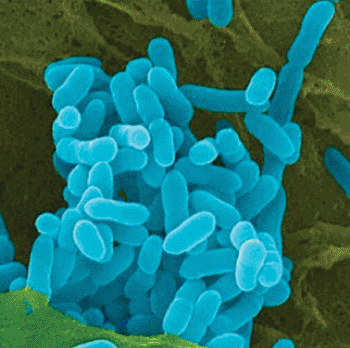Molecular Immunoassay Diagnoses Melioidosis
By LabMedica International staff writers
Posted on 18 Feb 2013
Melioidosis is caused by the Gram-negative bacterium Burkholderia pseudomallei for which the standard test growing it on microbiological culture media, which requires at least 3 to 4 days to obtain a result, hindering successful treatment of acute disease. Posted on 18 Feb 2013
Where the seroprevalence of antibodies to B. pseudomallei is relatively low, serology is a potentially advantageous addition to culture in the diagnosis of melioidosis and serology would be very effective in diagnosing travelers and military personnel returning from endemic tropical areas.

Image: Burkholderia pseudomallei (Photo courtesy US Centers of Disease Control.
Scientists at James Cook University (Douglas, Australia) developed an enzyme-linked immunosorbent assay (ELISA) and a quantitative immunopolymerase chain reaction (PCR) assay capable of detecting melioidosis-specific antibodies. They demonstrated their validity with indirect haemagglutination assay (IHA)-negative sera from patients with melioidosis. A total of 10 serum samples from three IHA-positive and three IHA-negative melioidosis patients were tested along with sera from six healthy controls.
To verify the assays, the scientists used various techniques including immunoblotting, indirect peroxidase-conjugated protein G ELISA, and indirect terminus utilization substance (Tus) - DNA replication terminator sites (Ter)-lock immuno-PCR. Both the latter systems Both systems were based on the detection of immunoglobulin G (IgG) by protein G conjugated to a signal generation system consisting of either the enzymatic activity of peroxidase or a quantitative PCR (qIPCR) read-out in the case of Tus and the TT-lock-T DNA probe. All patient sera, including that collected at presentation and in subsequent follow-up collections, reacted against the B. pseudomallei antigenic fraction in both the G-peroxidase ELISA and TT-lock qIPCR format. Individual negative control sera from six healthy controls did not react against the B. pseudomallei antigenic fraction in either assay.
The authors concluded that although the indirect TT-lock qIPCR system is slightly slower than the ELISA format, it requires the least amount of serum and would be advantageous when multiple testing is required for the confirmation of disease. The ability to detect antibodies in patient sera that were persistently IHA negative is very promising, indicating that both immunoassay formats will be ideal for the rapid and reliable diagnosis of melioidosis in patients in nonendemic regions. The study was published in the February 2013 edition of the journal Diagnostic Microbiology and Infectious Disease.
Related Links:
James Cook University














